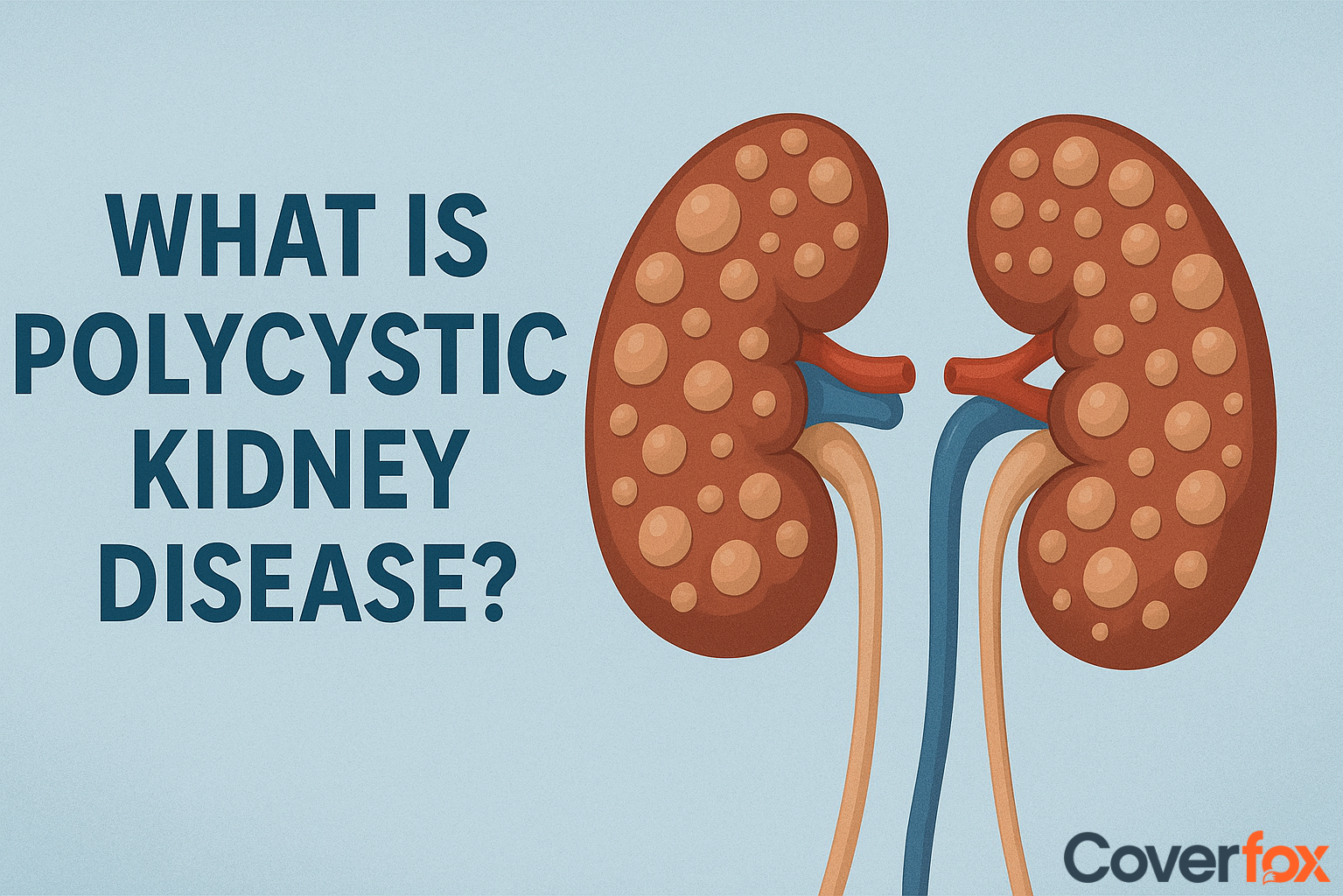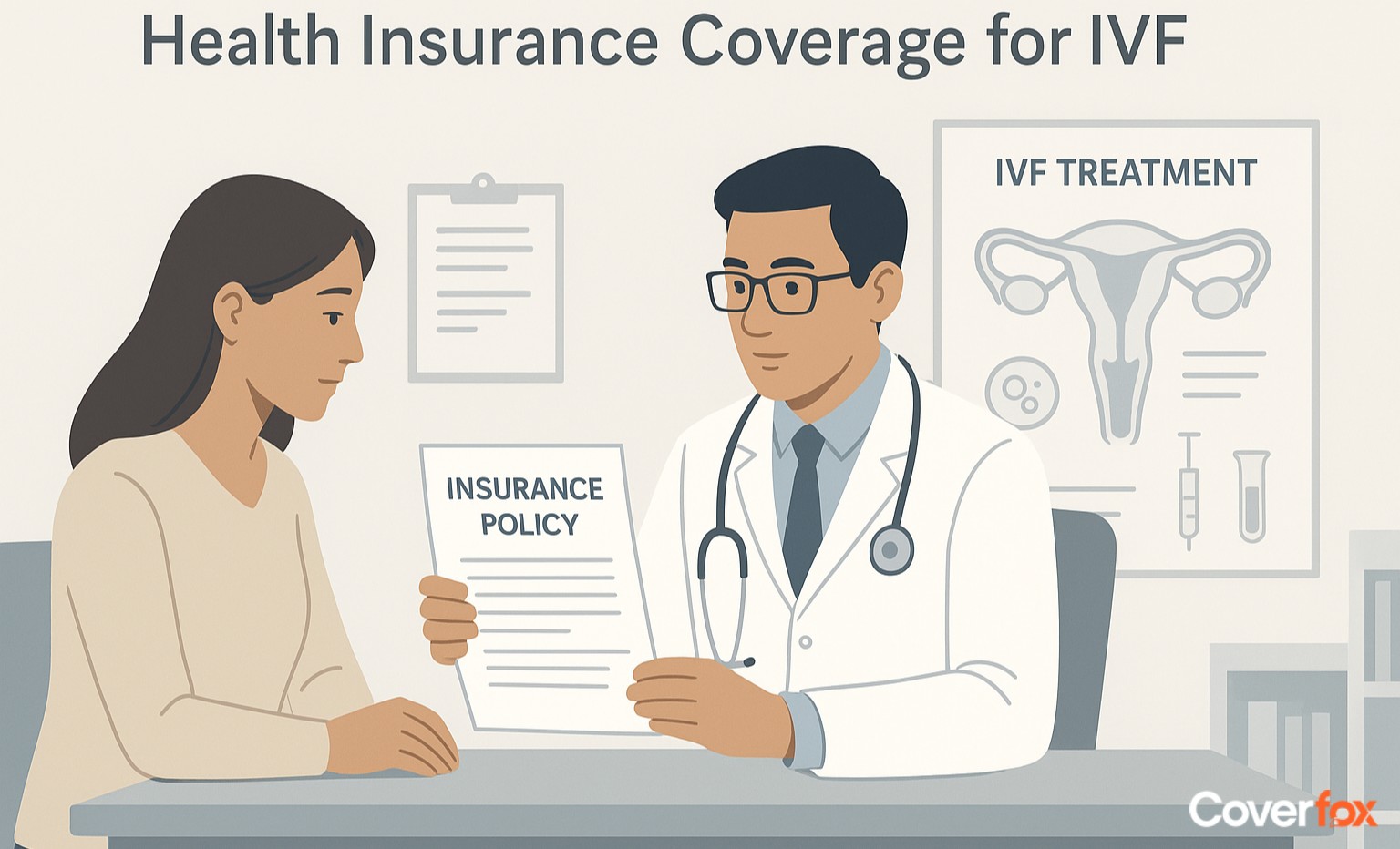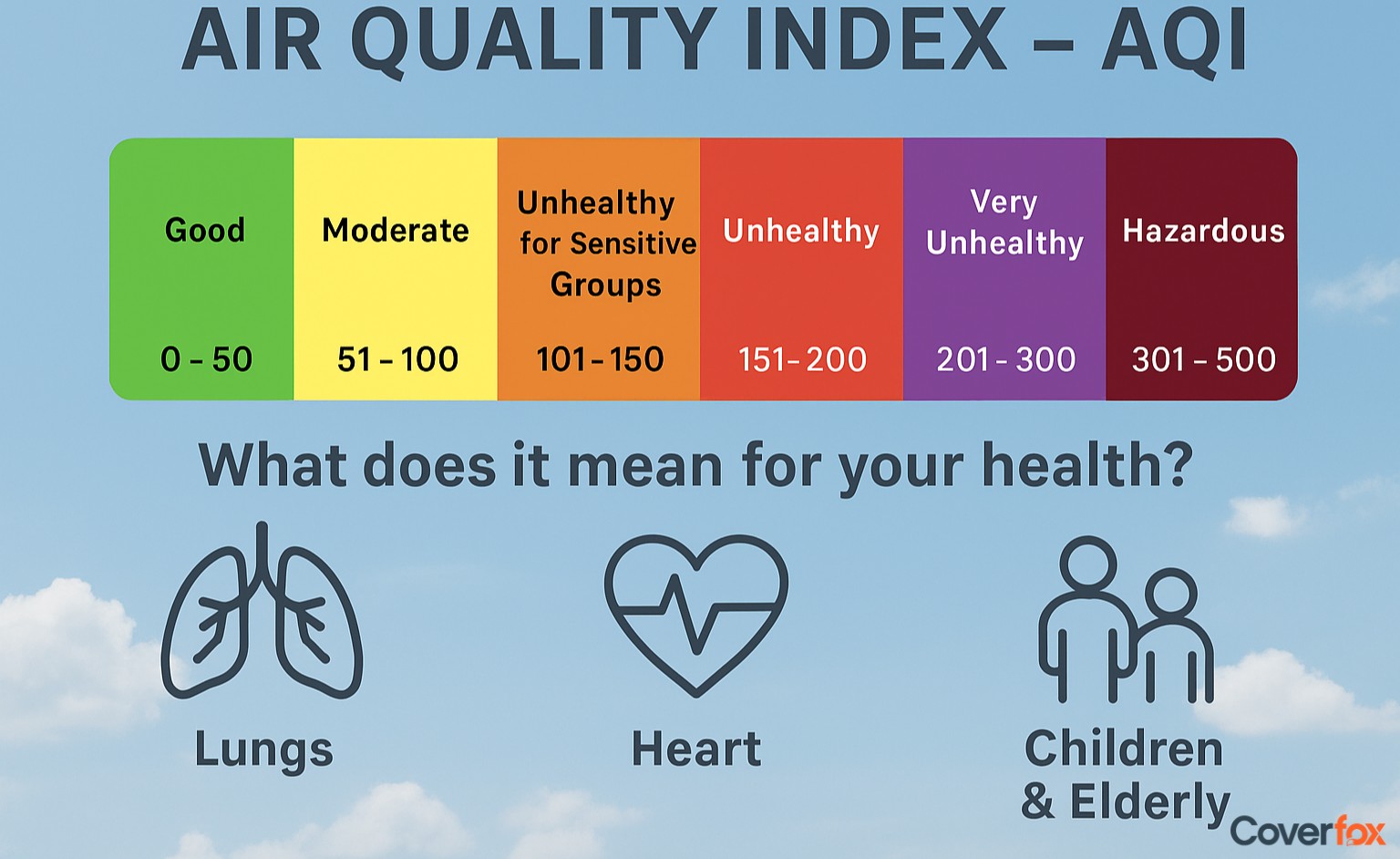Monsoons are here, knocking on your door. Are you ready for some monsoon action? Splashing the water in puddles, enjoying a rain dance with friends, and the aroma of the freshness of the environment? But be careful.

Rains bring with them a plethora of waterborne diseases that will give you a hard time if you do not stay vigilant. According to WHO, 3.4 million people die every year from water-related diseases globally - many during rainy seasons. So, to be safe while enjoying the rains, let us go over some common waterborne diseases that are mainly prevalent in the monsoon.
Causes of Waterborne Diseases in Monsoon
Before getting acquainted with common waterborne diseases, let us first understand how these monsoon diseases become so widespread during the rainy season:
Stagnant and contaminated water supply
Overflowing drains and sewage mixing with drinking water
Poor sanitation and hygiene practices during the rainy season
Due to poor infrastructure, pothole and puddle formation are quite high in India. These lead to stagnant water and the water supply getting contaminated. Storage containers collect rainwater rich in bacteria, viruses, and parasites that lead to contaminated water supplies. In 2015, 70% of monitored rivers were found to be polluted, though this figure improved slightly to 46% in 2022, according to the PIB.
Moderate rainfall is fine, but heavy rainfall can lead to overflowing drains, leading to the mixing of sewage water with drinking water. In India, groundwater is the major source of drinking water for many areas, as the sewage from blocked gutters and overflowing drains seeps into the ground, contaminating the supply of groundwater, which is the major source of drinking water. A study showed that around 21% of communicable diseases are linked to unsafe water, and an estimated 2 lakh people die each year due to inadequate access.
Limited access to toilets and subpar sanitation during monsoon promote pathogen spread. Despite efforts, over 300 million people in India continued open defecation practices until recent years. In one state, acute diarrheal diseases surged nearly 80% from 2022 to 2024, linked directly to sanitation failures.
List of the Most Common Waterborne Diseases in Monsoon
Here are the major waterborne diseases that haunt the monsoon season in India:
1. Cholera
Cholera is a severe diarrhoeal disease caused by Vibrio cholerae, typically contracted from contaminated water or food. Cholera can lead to rapid dehydration, sucking the water out of the body, and if left untreated, can be deadly. Monsoon floods and poor sanitation drastically increase its spread. In June 2024, Ahmedabad recorded over 1,000 cases of waterborne illnesses in just 25 days, including hundreds of cholera cases as per reports. In Asia, India constitutes 78% of the cholera cases. (Indian Journal of Medical Research).
How it Cholera Spreads
Cholera spreads through ingestion of water or food contaminated with faecal matter containing V. cholerae. During monsoons, flooding and sewage overflow contaminate drinking water supplies, increasing the risk.
Symptoms of Cholera
- Sudden onset of profuse, watery diarrhoea (often described as “rice water stools”)
- Vomiting
- Rapid dehydration, sunken eyes, dry mouth
- Muscle cramps and extreme weakness
- In severe cases, it can lead to shock and death within hours if untreated.
How to Treat Cholera
- Begin immediate rehydration with Oral Rehydration Salts (ORS) to replace fluids and electrolytes.
- In severe cases, intravenous (IV) fluids are necessary.
- Antibiotics like doxycycline or azithromycin may be prescribed to shorten the duration of diarrhoea.
- Seek medical attention promptly to prevent complications, especially in children and the elderly.
2. Typhoid Fever
Typhoid is a bacterial infection caused by Salmonella typhi, which affects the intestinal tract and bloodstream. Unsanitary food handling and contaminated water during monsoons are the major culprits behind typhoid. Typhoid fever in India is a significant public health concern, with an estimated 4.5 million cases annually. (NIH).
How Typhoid Spreads
Typhoid spreads when a person consumes water or food contaminated with faeces from an infected person with the bacteria Salmonella typhi. In the monsoon, sewage often mixes with water sources, and food contamination is common.
Symptoms of Typhoid
- Prolonged high fever
- Weakness and fatigue
- Abdominal pain and bloating
- Loss of appetite
- Constipation or diarrhoea
- Skin rashes ("rose spots") in some cases
How to Treat Typhoid
- Antibiotic therapy is the primary treatment—commonly prescribed drugs include ciprofloxacin or azithromycin.
- Patients should stay hydrated and follow a nutritious soft diet to support recovery.
- Severe cases may require hospitalisation and IV fluids.
- Avoid self-medication as antibiotic resistance is a concern - always consult a doctor.
3. Hepatitis A (Viral Jaundice)
Hepatitis A is a liver infection caused by the Hepatitis A virus (HAV), commonly spread through ingestion of contaminated food or water. It often causes mild to moderate illness but can occasionally lead to liver complications. In community studies, attack rates (the rate at which people develop the disease) have been observed to be highest in the 15-24 age group, followed by younger children.
How Hepatitis Spreads
Hepatitis A spreads through the faecal-oral route - typically when a person eats or drinks something contaminated by stool from a person infected with HAV. It’s more common in areas with poor sanitation.
Symptoms of Hepatitis
- Fatigue and weakness
- Yellowing of the skin and eyes (jaundice)
- Loss of appetite and nausea
- Dark urine and pale stools
- Fever and abdominal pain (especially near the liver)
How to Treat Hepatitis A
- There is no specific antiviral treatment; the infection usually resolves on its own.
- Treatment focuses on supportive care - adequate rest, a liver-friendly diet, and avoiding alcohol.
- Doctors may recommend vitamin supplements and fluids to support liver function.
- In case of severe symptoms, hospitalisation may be required to monitor liver health.
4. Diarrhoea or Gastroenteritis
Diarrhoea, especially in its acute form (gastroenteritis), is a common monsoon illness caused by bacteria, viruses, or parasites found in contaminated water or food. It is particularly dangerous in children due to the risk of dehydration. Diarrheal disease prevalence in children under five has fluctuated, with a recent estimate of 7.3% in 2019-21, according to the National Family Health Survey.
How Diarrhoea Spreads
Spread primarily via ingestion of contaminated water or food. Poor hand hygiene and exposure to unclean utensils or food packaging can also transmit pathogens.
Symptoms of Diarrhoea
- Frequent loose or watery stools
- Stomach cramps and pain
- Nausea and vomiting
- Mild to high fever
- Signs of dehydration - dry mouth, dizziness, reduced urination
How to Treat Diarrhoea
- Begin treatment with ORS to prevent dehydration; this is critical in children.
- In bacterial cases, doctors may prescribe antibiotics, while viral diarrhoea is managed with supportive care.
- Zinc supplements may be recommended to reduce the severity and duration in children.
- Avoid anti-diarrhoeal medications without medical supervision, especially in infections caused by bacteria or parasites.
How to Prevent Waterborne Infections During the Rainy Season?
As the old saying goes, prevention is better than a cure. Most waterborne diseases can easily be avoided with basic hygiene practices. With a few simple yet effective precautions, you can significantly reduce your chances of falling ill this season:
Boil and Purify Drinking Water
Proper Food Handling
Hand Hygiene
Avoid Stagnant Water
Eat Freshly Cooked Food
Stay Vaccinated
Rainwater runoff can mix with sewage and carry harmful bacteria into the water supply. Boiling water for at least 5 minutes kills most pathogens. Boiling water for just 1 minute kills 99.9% of disease-causing bacteria and viruses, yet only 30% of households do this regularly. Alternatively, use water purifiers, chlorine tablets, or UV filters to ensure your water is safe for drinking and cooking.
Always wash vegetables and fruits thoroughly with clean, hygienic water. Avoid eating food from unhygienic sources, especially street vendors during monsoon, as open food can easily get contaminated by flies and water splashes.
Wash your hands frequently with soap and clean water, especially after using the toilet, before cooking, and before eating. Carry a hand sanitiser if you're outdoors. Hand hygiene is one of the most effective methods of fighting against faecal–oral transmission of diseases.
Stagnant water is a breeding ground for mosquitoes and bacteria. Do not allow water to collect in buckets, flower pots, or clogged drains around your home. Cover water tanks and clean them regularly to prevent mosquito-borne diseases like dengue and malaria, which often accompany the monsoon.
Always go for home-cooked meals prepared with fresh ingredients. Avoid reheating food multiple times or consuming leftovers stored improperly, as they are more likely to support bacterial growth due to high humidity.
Vaccines are available for several waterborne diseases, including typhoid, hepatitis A, and cholera. Consult your doctor, especially if you live in or are travelling to a high-risk area. Staying updated on immunisations provides long-term protection against preventable infections.
Insurance Coverage for Waterborne Diseases
Preventing waterborne diseases is easy and can be done with basic hygiene. However, in an unfortunate case where you do contract a waterborne disease, you need to act quickly. As these diseases can be fatal if left untreated, you should immediately consult a doctor. The treatment for most waterborne diseases can be done with basic medications, but sometimes in severe cases, you need to get hospitalised.
To cover those bills, health insurance will become your helping hand. Firstly, if you have health insurance, you will not worry about going to the doctor because of money, as it will be covered by health insurance. Early detection helps with early and smooth treatment. Just ensure that your health insurance policy covers waterborne diseases, which is crucial during monsoons.
What’s Typically Covered Under Health Insurance
Note: (Varies on policies, please refer to your policy for accurate results)
Inpatient Hospitalisation
Diagnostic Tests
Day-care Treatments
Medicines & Consumables
Pre and Post-Hospitalisation
Cashless Treatment
Room rent, nursing charges, and doctor consultations for hospital stays due to illness.
Blood tests, stool cultures, imaging, and other lab tests for diagnosis.
Minor procedures that don’t require 24-hour hospitalisation.
Drugs, IV fluids, and ORS prescribed by a doctor.
Medical expenses incurred before admission and after discharge (usually up to 30 and 60 days, respectively).
Available at network hospitals if the policy allows.
Wrapping Up
Monsoons are fun, no doubt. But you should take care of your health this season. Monsoon is notorious for getting people sick, and waterborne diseases are more common in monsoons than in any other season. Maintain proper hygiene, eat home-cooked meals, drink boiled water and avoid street food during rainy seasons, and you will be safe from waterborne diseases. In case you contract a waterborne disease, do not panic; get yourself checked, and your health insurance will have your financial backing. If you are not insured, Coverfox provides the best platform for getting amazing deals on protection against waterborne diseases through health insurance.
More to Read:
Frequently Asked Questions
What is a waterborne disease?
These are diseases spread through sources of water.
Which disease is caused by the monsoon?
Diseases like cholera, dengue, malaria, diarrhoea, and typhoid are most common during monsoons.
What are the most common waterborne diseases?
Cholera, Typhoid, Hepatitis, and Diarrhoea.
Which season is malaria more common in?
Monsoon.
What are the preventive measures for waterborne diseases?
Drink boiled water, avoid street food, observe hand-hygiene, clean vegetables with clear water, and maintain basic hygiene.
Why are the waterborne diseases reported maximum in monsoon?
Due to waterlogging, overflow of sewage, collection of stagnant water and contamination of drinking water due to rains.





